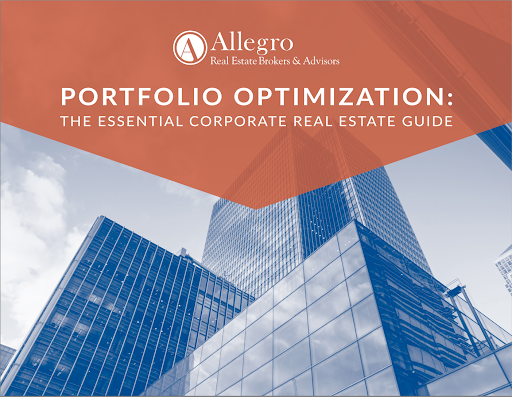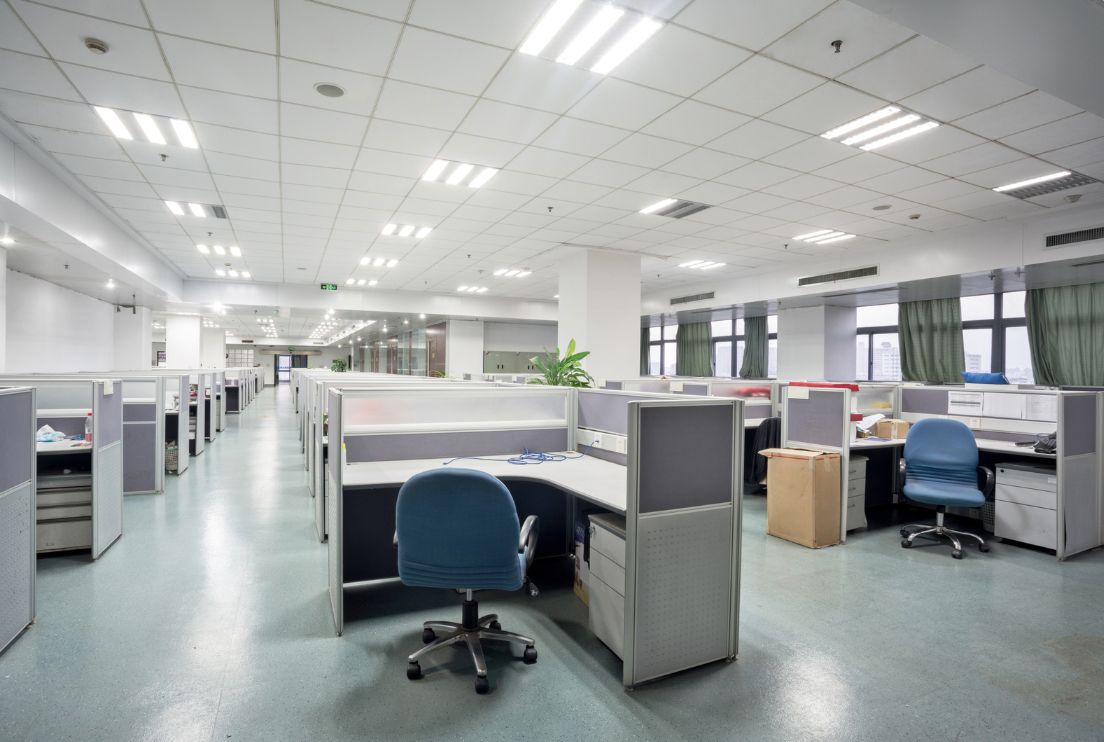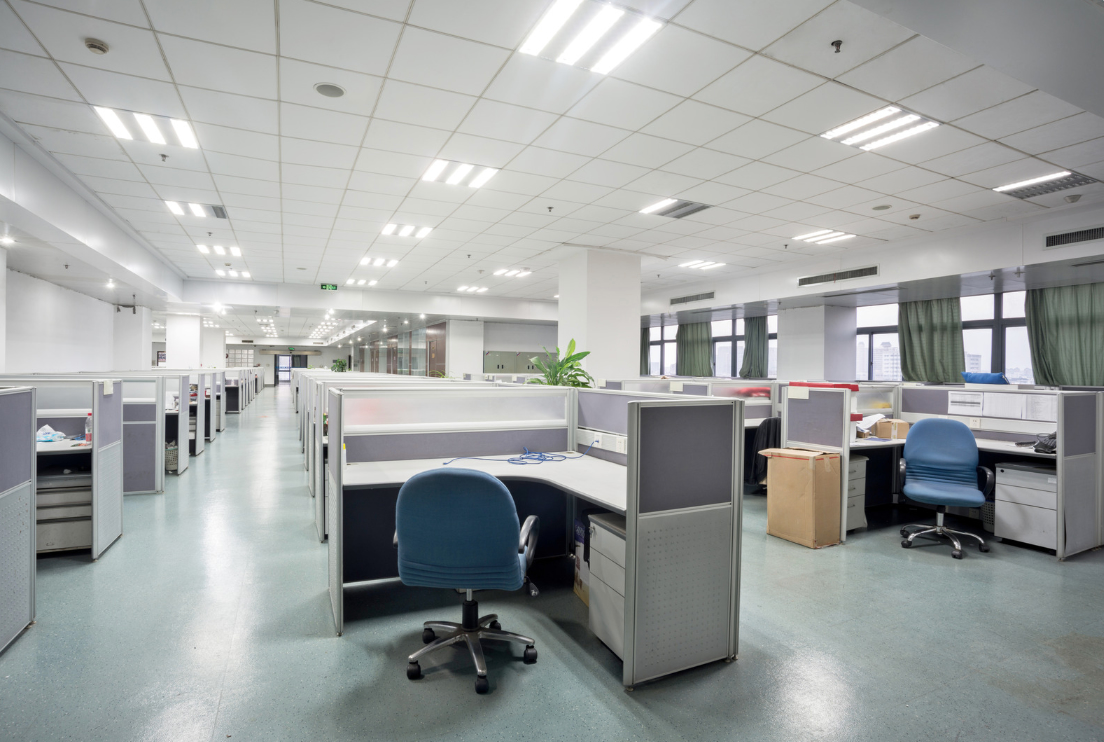The hybrid workplace and work-from-home surge coupled with an economic slowdown has led to an unsettling phenomenon that has gripped major cities across the world—zombie properties.
These once vibrant hubs of activity now stand significantly vacant and/or foreclosed, posing a serious issue for central business districts and affected commercial real estate tenants.
To shed light on this growing concern, we sat down with Michael Cantor, the president, chairman, and founding principal of Allegro. Below, Michael shares the implications of zombie buildings and how commercial real estate decision makers can prepare for what’s to come.
What are zombie buildings and why are they appearing?
The term zombie buildings is used in a few different applications, but in this case, we’re talking about multi-tenant investment properties in central business districts that are falling into foreclosure. When foreclosed, they're being managed by special servicers who are not as attentive to running a building, investing in building improvements, and structuring new lease deals as a traditional landlord would be. There are several factors impacting the rise of zombie buildings.
Work-From-Home Phenomenon
The work-from-home phenomenon has led to many office tenants either substantially reducing their space requirements or, in some cases, simply allowing their leases to expire. This reduced demand for office space is placing a growing number of office buildings in financial distress.
Currently, we’re seeing a trend that when tenants downsize, they desire to relocate to nicer, newer buildings. In the industry, we call this the flight to quality. This migration to Class A buildings is putting pressure on Class B and C properties. First, tenants are moving because they need their space to be reconfigured to support hybrid work environments, where their current space would be really difficult to rebuild to new requirements.
Second, in order to attract their employees back to the office, we’re seeing them move to better office space and amenities. As a result, Class B and C buildings are experiencing an unfair share of rising vacancy.
Rising Vacancy and High Interest Rates
The next issue is that many buildings have increasing vacancy rates resulting in falling rental revenue; and as they approach loan maturity, interest rates have significantly increased. There's an enormous number of buildings that have loans maturing in 2023 and 2024 at the same time that net operating incomes are declining.
First, many of these income-producing properties are falling below their debt coverage ratios putting their current loans at risk. Second, as an outsized number of these loans mature, landlords are trying to refinance buildings with lower values at higher interest rates. These assets are under water. As a result, an unusually large number of buildings are falling into foreclosure.
Regional Bank Distress
We're also seeing that regional bank distress is a potential problem for the office market. Commercial real estate is overwhelmingly financed by regional banks. These banks are increasingly foreclosing on distressed buildings, taking back underperforming assets. In addition to trying to stabilize these assets, this is placing pressure on regional banks’ lending capacity.
At the same time as landlords are experiencing lower values and higher interest rates, they may also have fewer banking options. This is especially concerning with the significant portion of underwater loans requiring refinancing in the coming years.
What are the economic and social impacts of zombie buildings on cities?
With an increase in foreclosed office buildings and a decrease in commuting employees, central business districts are losing income tax. We’re also seeing downtown retail businesses that once supported office markets unable to stay in business because they're not getting the same level of patronage that they received before the pandemic.
What strategies can be deployed to address the issue of zombie buildings?
From the building owner’s perspective, this entire situation creates a heightened concern about the financial wherewithal of landlords. When our team is representing a tenant, this becomes a significant factor in selecting buildings they should be considering. As a result of the increasing number of distressed assets, there is a limited pool of buildings that are viable relocation options.
From the landlord’s perspective, we're seeing a lot of older Class C buildings across the country being converted into apartments. Class B buildings are going to be in the most distress now. Because they were designed for modern office use, they tend to be larger rectangular floor plates with too much depth for apartment layouts. Inoperable windows and a lack of balconies also make them pretty unattractive for apartment use.
Distressed buildings are also being sold at fire-sale, or substantially discounted prices. I suppose that a building acquired in a fire sale could be bought by a landlord who can then modernize it to post-pandemic type of requirements. This is probably the best solution for most Class B office buildings that are less than 50 years old.
Have we seen cities emerge from this issue in the past?
Office markets go through cycles and there are periods of time when we've had office buildings experience distress, but not because tenants weren’t using office space. Tenants were downsizing during economic downturns, but today some are leaving the market altogether. We have seen cycles of tenants from central business districts migrate to the suburbs then later migrate back downtown. But tenants leaving the office market altogether? I don't think we've seen much of that historically.
Speaking of history, around the world, central business districts have experienced wars and plagues and other issues, and they tend to recover in some form or fashion. I just don't know exactly what they're going to look like 10 years from now.
What is your best advice to tenants seeking office space in central business districts?
Typically, we're suggesting that tenants steer clear of buildings that have high vacancy rates and look like they are headed into distress.
We can also look at buildings and understand when their mortgages are maturing. With the current climate, office properties that have loans maturing soon are more likely to turn into zombie buildings. This combined with higher-than-normal vacancy rates are clear indicators to stay away.
During economic downturns, our clients are often looking for really great deals. But, great deals only really happen when both the building and the landlord are in distress. When either one of them is financially sound, you’re not going to see below-market deals. And even if that were the case, do you really want to go into a building that’s financially distressed? If it's being managed by a special servicer, they are notoriously inattentive to managing building issues, investing in improvements, and doing good deals. My best advice for tenants is to work with an exclusive tenant representative real estate advisor, like Allegro, that will properly assist you with due diligence and ensure you seek financially stable office buildings.
Don’t Miss Other Valuable CRE Industry Insights
When you subscribe to our blog, you’re signing up to receive weekly industry updates delivered straight to your inbox from our commercial real estate experts. Topics include advice and opinions on the state of the industry, market reports, and Allegro team updates.








